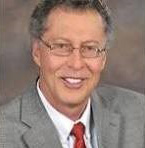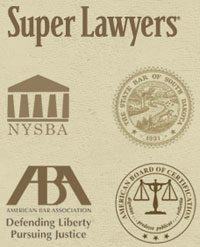A recent South Dakota Supreme Court decision, Holsti v. Kimber, 2014 S.D. 21, has shed light on two areas of the state’s dormant or abandoned mineral interests act (see South Dakota Codified Laws § 43-30A et. al.): first, what constitutes “use” (S.D.C.L. § 43-30A-3) and “nonuse” (S.D.C.L. § 43- 30A-2) of a mineral interest in order for a claimant to keep ownership; and second, who may claim and exercise that “use.” North and South Dakota’s Dormant/Lapsed Mineral Act are substantially similar. This case adds to the body of case law discussing this important natural resources law. Though some questions remain unanswered following the decision, the Court’s decision discusses what a mineral interest owner may do to prevent lapse of one’s mineral interest and what a mineral interest owner may do to maintain his interest in a mineral estate. This case is the first time the South Dakota Court has addressed head on the state’s dormant mineral interest law.
South Dakota defines a mineral interest as “any interest, in oil, gas, coal, clay, gravel, uranium, and all other minerals of any kind and nature, whether created by grant, assignment, exception, reservation, or otherwise, owned by a person other than the owner of the surface estate.” (S.D.C.L. § 43-30A-1 (emphasis added)). A mineral interest is considered abandoned if it is “unused” for twenty-three years (twenty years in North Dakota) and a statement of claim is not recorded within that time. (S.D.C.L. § 43-30A-2; N.D.C.C. § 38-18.1-02). Upon abandonment, the surface estate owner may succeed to the mineral interest of another claimant, and unite the two estates. (S.D.C.L. § 43-30A-6).
In order to maintain ownership of a mineral interest and avoid lapse, the mineral interest must be “used.” (See S.D.C.L. § 43-30A-3). “Use” under the statute may include any one of eight statutorily defined “uses.” (Id.) One such “use” relevant to this case, includes:
Any conveyance, valid lease, mortgage, assignment, order in an estate settlement proceeding, inheritance tax determination affidavit, termination of life estate affidavit, or any judgment or decree that makes specific reference to the mineral interest is recorded . . . .
(S.D.C.L. § 43-30A-3(4)). It is the burden of the mineral interest holder to maintain his interest. (See Holsti, 2014 S.D. 21 at ¶ 12 (citing Texaco, Inc. v. Short, 454 U.S. 516, 529-30 (1982)). Upon lapse, the burden shifts to the surface estate owner (the landowner) to take steps to succeed in the mineral interest. (See S.D.C.L. § 43-30A-6). In Holsti, the issue before the Court was whether the mineral interest holders fulfilled their burden to maintain their interest in the mineral estate. (See ¶ 11).
The facts of the case: in 1967, Severt Kvalhein (“Kvalhein”) conveyed real property to Gordan Holsti and recorded the deed. (Holsti at ¶ 2). In the sale, Kvalhein reserved fifty percent of the mineral rights for himself. (Id.). Two years later, in 1969, Kvalhein died and his estate was devised to eight heirs, each heir taking a one-eighth interest in the minerals. (Id.).
In 2007, Mr. Holsti conveyed his surface estate to his sons (“the Holstis”). (Id. at ¶ 3). In December 2011, the Holstis published a notice of lapse of mineral interest in the official county newspaper in accordance with the statutes to recover mineral interests. (Id.; see S.D.C.L. § 43-30A-6.). No one responded by recording a statement of claim asserting ownership of the mineral interest. (Holsti, at ¶ 3). The Holstis filed a quiet title action in May 2012 alleging abandonment of the mineral interest due to “nonuse.” (Id. at ¶ 4).
Kvalhein heirs (“the heirs”) answered and rejected the argument that the mineral interest was abandoned. (Id. at ¶ 5). In their defense, the heirs referenced several 1978 oil and gas leases, a 1994 statement of claim by one of the heirs, and two mineral deeds recorded by one of the heirs in 1998 and 2011. (Id.).
The Court looked to whether the Kvalheim heirs had a valid mineral interest at all. The trial court had decided they did not have a valid interest because no document was recorded evidencing transfer of the mineral interests to the heirs and reasoned that “use” of a mineral interest could only be done by a “record owner.” (See id. at ¶ 9). The Supreme Court rejected that reading of the statute, and found that the heirs did not need a recorded written document conveying Kvalheim’s mineral interest to them. (Id. at ¶ 15). The Court found the Kvalheim’s last will and testament, though unrecorded, was sufficient to convey the mineral interest to the heirs upon Kvalheim’s death. (Id., at ¶ 15; S.D.C.L. § 43-30A-1).
Once the Court determined the heirs had an interest in the mineral estate, it next turned to whether or not that interest had been abandoned due to “nonuse,” or if the heirs had satisfied the law’s “use” requirements. (Holsti, at ¶ 16). The circuit court found the 1978 oil and gas leases recorded by the heirs were insufficient because they did not make specific reference to the mineral deed recorded by Kvalheim in 1967. (Id.). The Supreme Court disagreed. (Id.). Because the language of the statute does not specifically use the words “record holder” or “original deed” the Court held the only two requirements for a recorded oil and gas lease to satisfy “use” were: 1) a specific reference to the mineral interest in question and 2) recording in the county register of deeds office. (Id.). Because the heirs’ oil and gas leases specifically referred to the legal description of the minerals and because the leases were recorded in the proper county’s register of deeds office, the Court found the leases to be sufficient as “use.” (Id.). (In a similar 2013 case decided by the North Dakota Supreme Court, Estate of Christeson v. Gilstad, the North Dakota Court also found that a legal mineral interest owner by inheritance, but not a record owner, could record an oil and gas lease to preclude abandonment of the mineral interest. (829 N.W.2d 453 (N.D. 2013)).
By exercising their rights as mineral interest holders and recording oil and gas leases in 1978, the Kvalheim heirs reset the clock back to zero on the twenty-three year test for abandonment. (See SDCL 43-30A-2). Therefore, from the last recorded lease in 1978, the heirs had twenty-three years in which the surface estate owners could not claim abandonment. Before the expiration of this twenty-three years (1978-2001), two Kvalheim heirs recorded documents sufficient to toll the clock again: in 1994, one heir recorded a valid statement of claim (Holsti, at ¶ 18); and in 1998 and 2011 two mineral deeds were recorded conveying the mineral interest between heirs. (Id. at ¶ 17). The Court found both the statement of claim and mineral deeds constituted a “use” under the law and precluded abandonment. (Id. at ¶ 17-18). The Court did not decide and instead remanded to the circuit court an additional issue: whether these two “uses” by some of the Kvalhein heirs were sufficient to preserve the other six heir’s mineral interests. (Id. at ¶ 19).
In their holding, the Court discussed who may be a mineral interest holder and what they may do to satisfy the burden of “using” their mineral estate. This clarification is to the benefit of mineral interest holders because non-record holders, that is parties who claim mineral interest rights but have no deed of record, may still protect their interests (it nevertheless a better practice to record an interest).
Chronological Timeline of Events
|
Kvalheim & heirs/Defendants |
Holsti/Plaintiff |
| 1967: Severt Kvalhein conveyed real property to Gordan Holsti, but reserved 50% of the mineral rights for himself. The deed was recorded in Harding County, South Dakota. | |
| 1969: Severt Kvalhein died, and devised his estate to his eight heirs; therefore, each heir individually inherited 6.25% of the property’s total mineral interest. | |
| 1978: Multiple oil and gas leases were recorded in Harding County by several of Kvalhein’s heirs (including: Nina Grev and Sylvia & Jerome Hjelmeland). | |
| 1994: Nina Grev, a Kvalhein heir, filed and recorded in Harding County a statement of claim related to the mineral interest. | |
| 1996: Gordon Holsti published a notice of lapse of mineral interest in the official Harding County newspaper once a week for three weeks, which notices and affidavit were recorded in the Harding County Register of Deeds Office. | |
| 1998: Jerome Hjelmeland, a Kvalhein heir, conveyed his 6.25% mineral interest to his wife, Sylvia Hjelmeland, by “Mineral Deed” which was recorded in Harding County. | |
| 2007: Gordon Holsti conveyed his surface estate to his sons, John and Mark (“the Holstis). | |
| June 2011: Sylvia Hjelmeland conveyed her 6.25% mineral interest to her two children, Katherine and Gregory, and recorded the deed in Harding County. | |
| December 2011: The Holstis published a notice of lapse of mineral interest in the official Harding County newspaper, once a week for three weeks, as required. No notice was mailed to Kvalheim, because he died in 1969 a single man. No inquiry was made into who was the owner of Kvalheim’s mineral interest following his death. | |
| May 2012: The Holstis brought a quiet title action alleging Kvalheim’s mineral interest lapsed due to nonuse and that Gordan had succeeded Kvalheim’s mineral interest in 1996 due to his published notice of lapse; or, alternatively, that they had succeeded Kvalheim’s mineral interest in 2011 based on their publication of the notice of lapse. |





